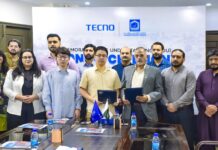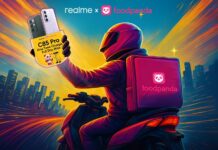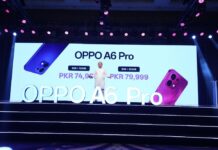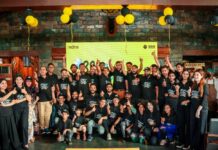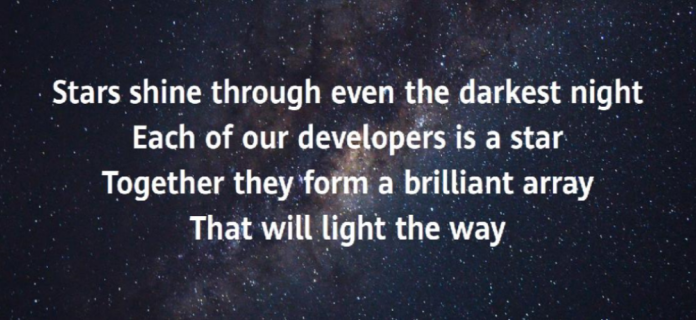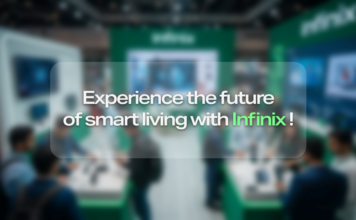HDC 2020 (Together) was held today at Songshan Lake. In the keynote speech, Huawei announced major upcoming updates for HarmonyOS 2.0, EMUI 11, HMS (Huawei Mobile Services), HUAWEI HiLink, and HUAWEI Research.
These improvements will empower global developers and ecosystem partners to provide enhanced and innovative user experiences for users.
At the event, Huawei also unveiled six new products that will contribute to Huawei’s all-scenario experience – HUAWEI MateBook X, HUAWEI MateBook 14, HUAWEI WATCH GT 2 Pro, HUAWEI FreeBuds Pro, HUAWEI WATCH FIT, and HUAWEI FreeLace Pro.
During the three days, Huawei will bring together developers from around the world through various exciting activities, including Lakeside Talks, Tech. Sessions, Tech. Hour, Codelabs, and more. The itinerary will provide opportunities for developers to network, collaborate, and explore ways to bring smart all-scenario experiences to every user.
“Huawei’s breakthrough in ecosystem development is a result of the strong support from global developers and partners. Huawei will fully open core technologies as well as software and hardware capabilities to developers, collaborating with them to drive further innovation of an all-scenario smart ecosystem,” said Richard Yu, Executive Director and CEO of Huawei Consumer Business Group.
“Stars shine through even the darkest night. Each of our developers is a star. Together they form a brilliant array. That will light the way. ”
HarmonyOS 2.0: Officially Open Source with Mobile HarmonyOS Beta Available to Developers by Year-End
Huawei announced its all-scenario experience operating system, HarmonyOS, back in 2019. Since then, a robust line-up of devices has been developed for the system, facilitating quick device discovery, instant connection, hardware collaboration, and resource sharing between multiple smart devices.
HarmonyOS 2.0 is announced today, bringing a comprehensive upgrade to its existing distributed capabilities, including software bus, data management, and security. Huawei also introduced an adaptive UX framework that allows developers to quickly reach tens of millions of new devices and users.
With the latest update, HarmonyOS will officially be open-source and developers will be able to gain access to emulators, SDK packages, and IDE tools. The open-source project, which is donated to Open Atom Foundation, will be launched in stages with a mobile HarmonyOS beta release planned firstly for Chinese developers at the end of 2020.
Richard Yu announced the roadmap for HarmonyOS in his keynote speech. “Starting on 10 September, HarmonyOS is open to 128KB-128MB IoT devices, such as smart TVs, wearables, cars, and more. In April 2021, we will open it to 128MB-4GB devices and in October 2021, HarmonyOS will be opened for devices above 4GB,” he said.
Based on the distributed technology in HarmonyOS, the newly released EMUI 11 enables interaction beyond smartphones.
The new operating system allows devices to interact with HarmonyOS-based IoT devices, bringing a unique all-scenario experience to users, including using the camera of a bigger-screen device for video calling. The process is powered by the touchless connection between smartphones and HarmonyOS-based home devices, enabling screen projection, and more.
Huawei Mobile Services (HMS) Ecosystem: Breaking Ground as The World’s Third Largest Mobile App Ecosystem
With the support of more 1.8 million registered developers worldwide, AppGallery and the HMS ecosystem has continued to show progress this year. AppGallery currently has over 96,000 apps integrated with HMS Core and more than 490 million global active users. In addition, it also achieved a record 261 billion app downloads and distributions between January and August 2020.
With Unrivalled, Affordable Performance the New HUAWEI MatePad T 8 Goes on Sale
In a single year, HMS Core 5.0’s open capabilities have increased from 14 Kits to 56 Kits, while the number of APIs has jumped from 885 to 12,981 covering seven major areas, helping developers achieve innovation and simplify the development process.
For instance, the CG Kit in the Graphics field improves graphics, image quality, and experience, as well as improving game screen rendering efficiency. The location kit in the App Services category meets the positioning requirements, providing centimeter to millimeter accuracy location tracking depending on the scenario.
Huawei is committed to fully opening its core software and hardware capabilities. It has opened up core software services, such as browsing, search, map, payment, advertising kits, to accelerate innovation in app development.
Huawei has also opened up hardware capabilities such as its world-class camera capabilities, AR map capabilities, communication, and transmission tools, as well as its leading privacy and security protection capabilities. Through these, Huawei seeks to empower developers to create a new generation of well-loved innovative apps across different categories.
Huawei also has extensive support to assist developers to explore business opportunities in China and other global markets, by providing relevant consulting service, localization and integration, marketing, and campaign services.
Going forward, Huawei continues to expand developer services. Huawei is building three global ecosystem cooperation labs in Russia, Poland, and Germany to serve global developers and provide enablement, testing, and certification services.
Five global developer service centers will also be established in Romania, Malaysia, Egypt, Mexico, and Russia, providing local services and platforms to help developers better grow and innovate.
HUAWEI HiLink: Enabling Billions of IoT Devices to Connect, Manage and Exchange
As the standardized language of IoT Devices, HiLink breaks down barriers between IoT devices from different brands and manufacturers, providing a unified platform where devices can connect easily, and interact seamlessly.
This year, upgrades to HUAWEI HiLink will be made in five key areas: connection, interaction, operation, solution provider, and authentication. The goal is to make billions of IoT devices connect easily, more convenient to manage and control, and interact seamlessly to enable an all-scenario hardware ecosystem.
At present, there are 50 million active users contributing more than 1 billion all-scenario device interaction requests every day, with a cumulative 400 million downloads of the Smart Life App
The automobile is also a key tenet of the IoT industry. The HiCar platform will continue to empower the automobile industry.
HiCar is currently collaborating with over 150 car models with more planned so that more car owners will enjoy the new smart travel experience in the near future.
Huawei is committed to the growth of the IoT hardware ecosystem. By providing more devices with access to the HiLink platform, it strives to make IoT development easier and more efficient, enabling Huawei to simultaneously support partners in establishing industry leadership in the IoT sector.
HUAWEI Research: The innovative research platform
HUAWEI Research, which focuses on front-end research, opens two key platform capabilities HUAWEI Research Kit and HUAWEI Research Cloud.
These capabilities facilitate efficient innovative research processes, accelerate technological breakthroughs, incubate apps innovations as well as quickly achieve result transformation. As a result, scientific research institutions, innovation institutions, industry organizations, medical institutions, and other industry partners are empowered, allowing industries from all sectors to prosper.
HUAWEI AppGallery Bolsters Itself with the Availability of Pakistan’s No. 1 Payments App Easypaisa
In the Active Health Field, Huawei assisted in heart health research by ensuring that health research data collected is accurate and diverse.
In the Travel Safety Field, mobile and wearable devices intelligently collaborate with automobiles to bring new safe-driving technologies such as the collision avoidance system and driver fatigue care.
In the HomeLife Field, Huawei harness multi-device wireless sensing capabilities to provide features, such as fall detection, non-inductive breathing monitoring, and spatial positioning.
Huawei will continue to drive its software and hardware ecosystem moving forward. It is committed to opening up core technologies and capabilities further and empowering global developers and partners to create new possibilities together.

